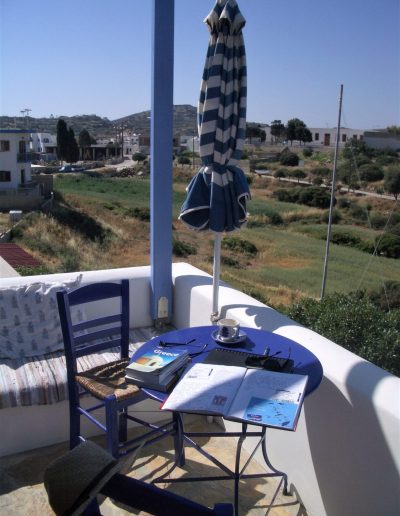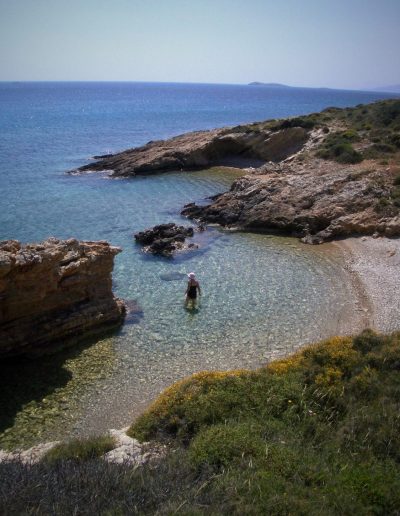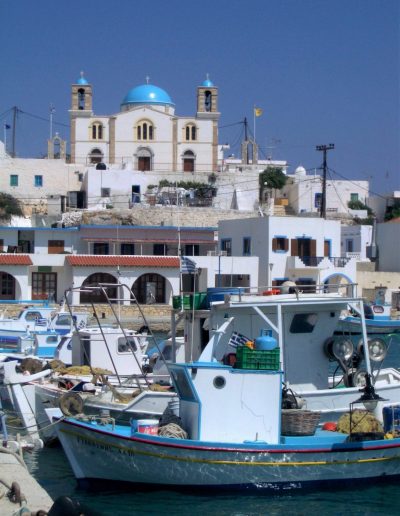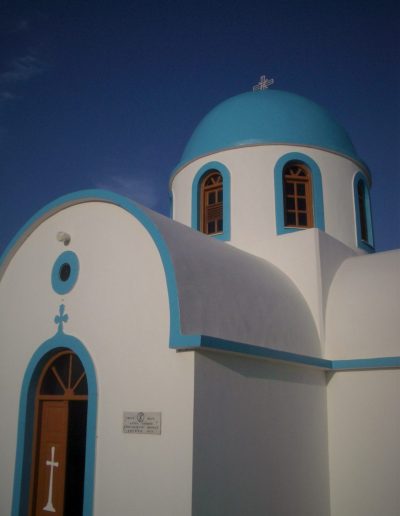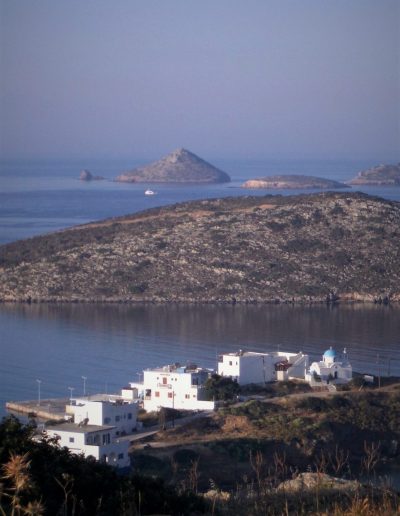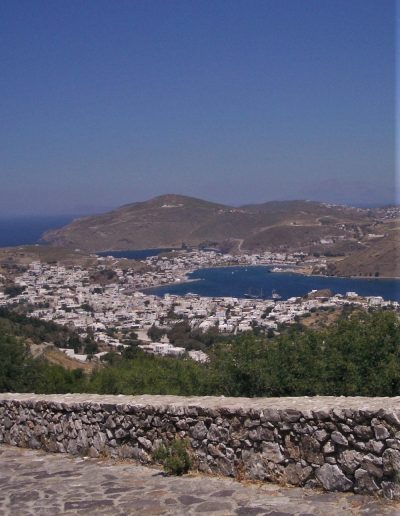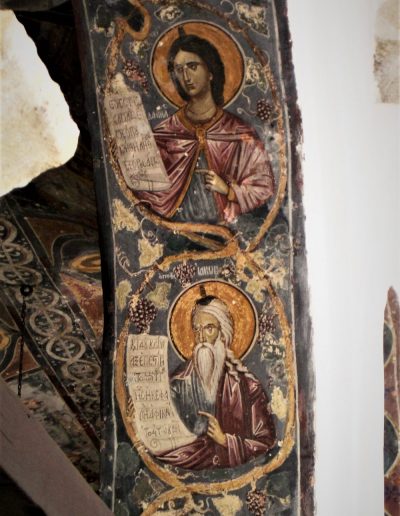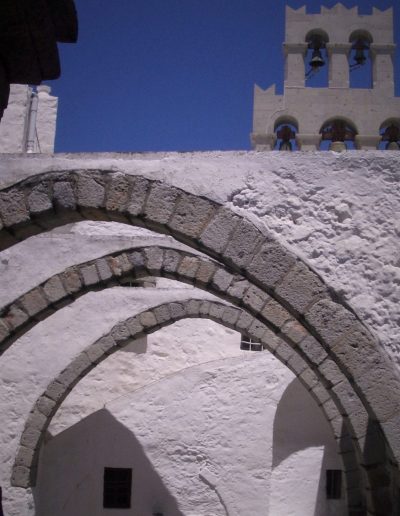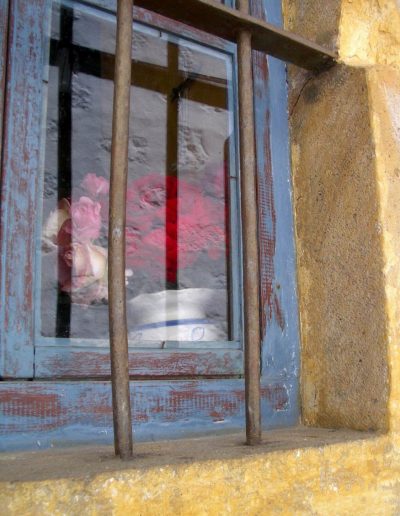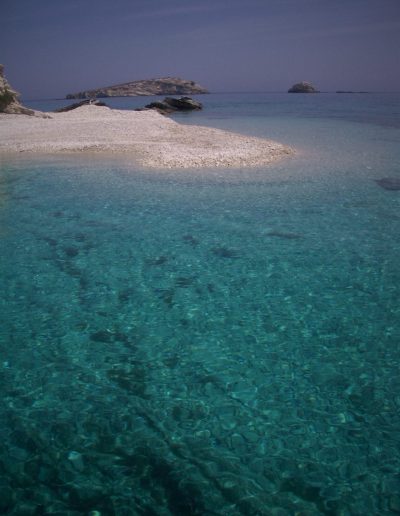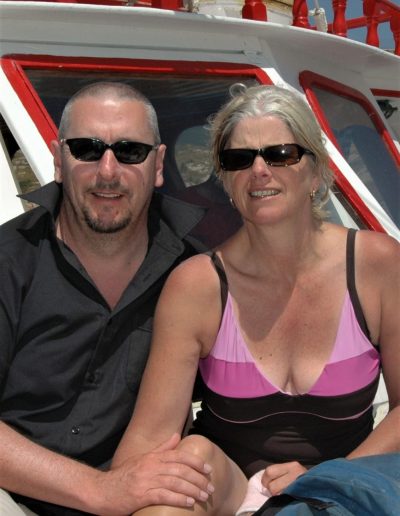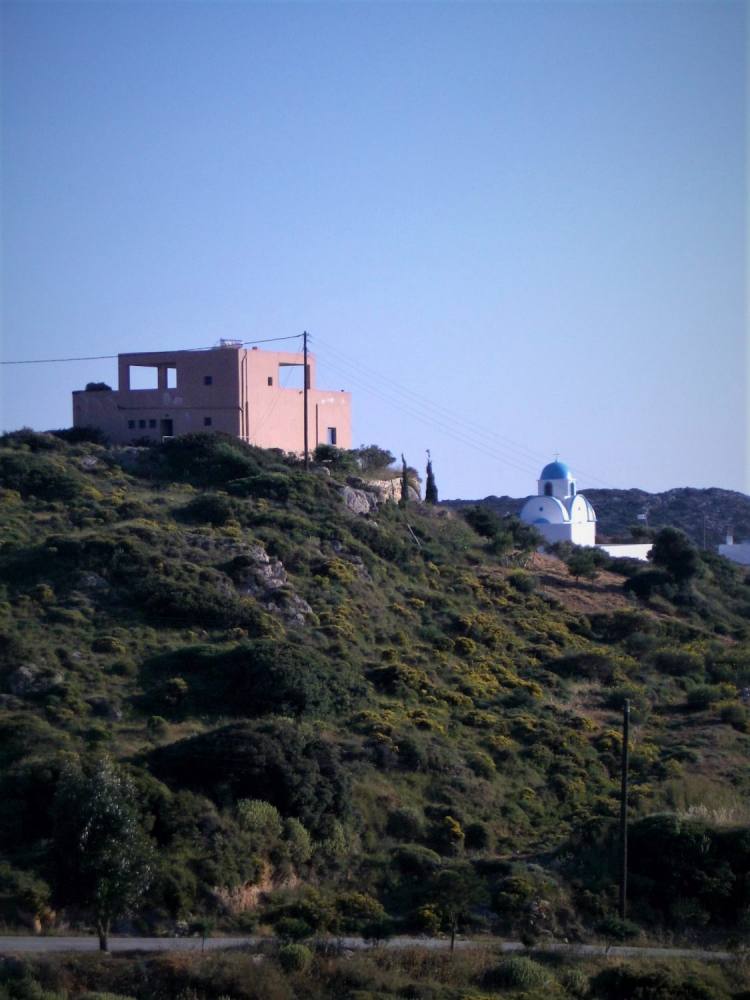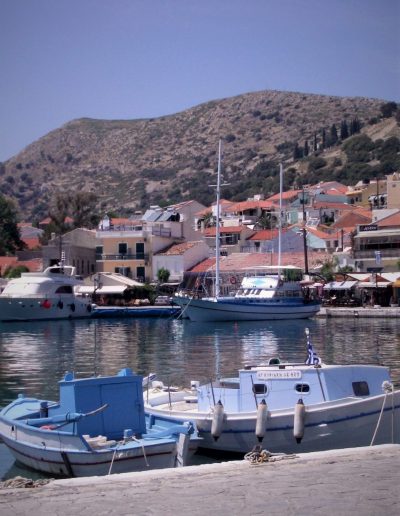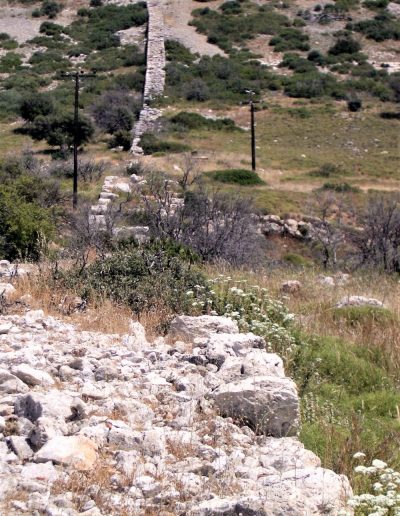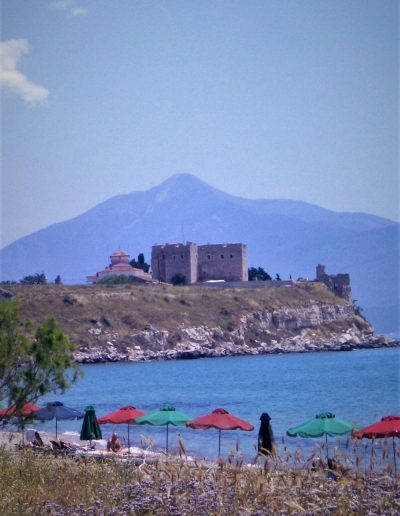- A week on the island of Lipsi was a centrepiece of this trip. We wanted to slow down and experience life on a small Greek island. Lipsi (population 700) is the home island of many in the Hobart Greek community so it seemed like a good choice.
- By way of perspective, Lipsi is only 8km long, end-to-end. There’s not a whole lot to do which was the point of going there. Over the week we tried out all the beaches, walked the ridge road, ate at the tavernas, talked with the locals about their Hobart connections, and visited a family chapel.
- One day we caught a ferry to the island of Patmos, getting off at the port town of Skala to visit the World Heritage city centre (Chora) and Monastery of St John. It was in a cave above Skala that St John is said to have had his vision of the apocalypse ending up as the Book of Revelation, the final book of the New Testament. Regardless of belief systems we found our visit to the cave, called the Monastery of the Apocalypse, to be quite spiritual. It had something. In 1088 a massive fortified monastery was built in honour of St John called the Monastery of St John the Theologian (don’t confuse the two). It’s located further up the hill at Hora. Hora is a beautiful place and we were very happy wandering its streets and lanes later in the day. We didn’t have time to linger in Patmos on this trip, but it seemed like an impressive place. The Easter celebrations are apparently something to behold.
- On the last day (Saturday) we did a lovely boat trip, visiting five small islands around Lipsi – Makronisi, Asponisi, Tiganakia, Arki (stopped for a drink) and Marathi (stopped for lunch). It was a blissful day and a great way to end the week.
- From our apartment in Lipsi we could see a large, pink house that has a very interesting history.
- In response to the Greek military junta of 1967-74, a revolutionary organisation called November 17 (N17) was formed in 1975 under the leadership of a man called Alexandros Giotopoulos. They were a deadly urban guerrilla group who mounted a campaign against the Greek state, banks, businesses, and foreign targets, killing 23 people between 1975 and 2002.
- When leaders of the group were finally captured in 2002, Alexandros Giotopoulos was found living on the island of Lipsi with his French wife, Marie-Therese Peignot. In the big pink house.
- He had lived on the island for many years under the pseudonym of Michalis Oikonomou and presenting as a retired academic. It is now believed he conducted meetings with Carlos the Jackal on islets around Lipsi in the 1980s.
- We asked the locals about Giotopoulos and they said it was a complete shock. He was a nice, bright, funny man and no one had heard any rumours of a dark past. He didn’t get on with the local mayor and painted his house in pink as a protest. (His father was once a secretary of Leon Trotsky and leader of the Greek Trotskyist party so he probably wasn’t a fan of local bureaucracy.) As a result the local council now has a regulation that if you repaint your building it must be in white with blue trim. And as a result, a lot of Lipsians don’t repaint. Or so we were told…
- We caught a ferry to the island of Samos, stopping in the port town of Pythagorio for a couple of nights. As the name suggests, Pythagoras came from here. We had a nice enough time getting in some swims and seeing the ancient sites. The World Heritage Pythagoreion and Heraion of Samos are split between two locations. We saw some of the Pythagoreion, though as it was a Monday the famous Eupalinos Tunnel was closed. We walked around the ancient walls and ancient theatre, and also visited a monastery with caves and some early Christian tombs. The Heraion is about 5 kms to the west and we didn’t go there.
- Pythagorio is a place that clearly caters to English tourists and we struggled to find a decent looking taverna for dinner. After convincing the lady at the hotel that we wanted ‘real’ taverna, she put us in a taxi and sent us 4 kms inland to Chora where we had a fabulous meal sitting under big plane trees in the village square. Clearly we were getting the hang of the Greek way by this stage of the trip.
- The next day was a bit of a balls up. Our ferry to Athens left from the port of Vathy, not Pythagorio, so we had to catch a cab across the island but ended up missing the connection. We decided to buy air tickets and fly, so arrived in Athens about on time but a bit poorer though much wiser for the experience.

